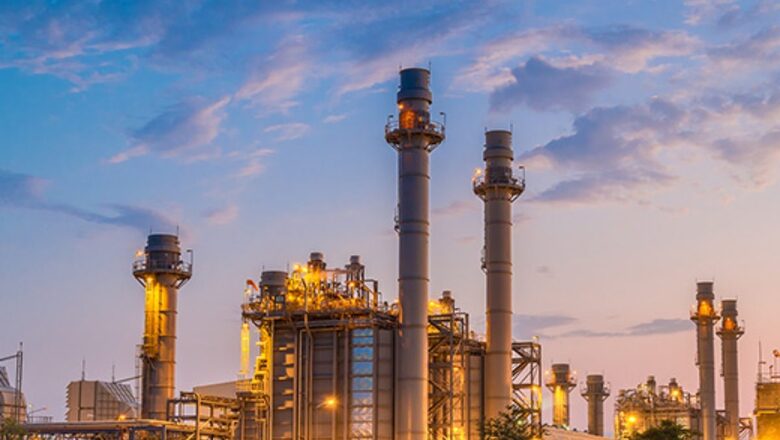
views
India now finds itself at an inflection point. Ensuring the Aatmanirbhar campaign is a success requires India to ensure it does not rely disproportionately on external powers for its energy requirements. However, that’s exactly what India relies on. At present, India imports large volumes of both oil and natural gas. The plan, however, is to steadily shed this dependence.
There is no overnight fix for India’s energy dependence on a host of countries around the world. However, the Indian government is working on a plan. As part of that plan, Union Minister for Petroleum and Natural Gas, Hardeep Singh Puri, on Sunday reviewed the much-awaited $20 billion liquefied natural gas (LNG) project in Mozambique.
This is a project critical to India’s goal of energy self-sufficiency and diversification. With a 12.88 million tonne per year (mtpa) capacity, Mozambique LNG is one of the largest greenfield LNG facilities to have ever been approved. This greenfield project will involve building infrastructure to extract gas from the Golfinho-Atum complex (GA) in “Area 1” – located in the Rovuma Basin 40 kilometres off the coast of northern Mozambique. Here’s what is fascinating about this block: it is estimated to have about 75 trillion cubic feet (Tcf) of recoverable gas.
The project has an initial production rate of 12.88 million tonnes of LNG per year. That would mean the block in Area 1 can provide natural gas for 120 years!
With Qatar sentencing eight Indians to death, a conversation surrounding the Arab kingdom’s share in India’s energy sector has been initiated. The thought of India depending on Qatar for most of its natural gas supplies has always been unnerving for many. Add to that, global tensions are now rising and the weaponisation of energy has become more pronounced. For context, last year (FY 2022-23), India imported a total of 19.85 million tonnes of LNG, of which 10.74 million tonnes, or 54 per cent, came from Qatar alone. If India does not act to diversify its energy supplies, the country’s security could be at stake. Fortunately, the government has been pushing for energy diversification for quite some time now.
For example, India took the right decision when it chose to invest in the LNG project in Mozambique. Today, three Indian PSUs hold a 30 per cent stake in the project. These are Oil and Natural Gas Corp Ltd (ONGC) through its overseas arm ONGC Videsh, Oil India and Bharat PetroResources.
However, the LNG project in Mozambique is not a fairytale just yet. In 2021, TotalEnergies – the operator of the project – had declared a suspension of its operations on the ground and declared force majeure in response to Islamic State-linked attacks on civilians in the vicinity of the site. TotalEnergies has still not officially resumed the development of the project, although an announcement to that effect is expected soon.
Notably, India is leading efforts to get the project restarted. Hardeep Singh Puri’s recent visit to Mozambique, which came as a follow-up to Dr S Jaishankar’s visit to the country in April this year indicates so. Furthermore, in May, India’s Oil Secretary Pankaj Jain and TotalEnergies CEO Patrick Pouyanne held a meeting, during which they discussed restarting operations at the project.
The Mozambique LNG project particularly suits India’s requirements. Mozambique is not in West Asia, which becomes a plus point for India. The war between Israel and Hamas and fears of a wider escalation have once again proven that West Asia remains a tinderbox, waiting to be ignited. Mozambique is also close to India’s west coast, which has the maximum number of LNG terminals. It is estimated that once LNG shipments start rolling out from the project site, they will take just three days to reach India.
India’s Big Plans for Energy Self-Sufficiency
India has a broad energy diversification strategy in place, which includes a push towards biogas and green hydrogen. The G20 summit saw the launch of the biofuel alliance, something which India has pioneered after the International Solar Alliance. The Modi government is also stepping up oil and gas exploration domestically, which is a long-term bet on making India self-sufficient in energy terms.
India is innovating along the way. For example, ethanol blending in petrol increased from 1.53 per cent in 2013-14 to 10.17 per cent in 2022. The aim is to achieve 20 per cent ethanol blending in petrol by 2030. Simultaneously, the government is setting up compressed biogas (CBG) plants that use animal and agricultural waste to produce gas. As for Green Hydrogen, which has been dubbed as the fuel of the future, the government has rolled out an incentive scheme of Rs 19,744 crore under the National Green Hydrogen Mission. The goal is to produce at least 5 million tonnes per annum of green hydrogen by 2030.
Also Read: Goal to Triple Renewable Energy Capacity as per ‘National Circumstances’: Power Minister at 6th ISA Assembly
Equally important for any nation looking to achieve energy self-sufficiency is the need to invest in domestic exploration. India does not depend on countries around the world for energy because it has no way fuels available domestically. Rather, it is the traditional lack of extensive domestic exploration that has led to India’s energy import dependence. It is only now that there seems to be a course correction of sorts afoot. The government now plans to increase India’s exploration acreage to 0.5 million sq. km by 2025 and 1 million sq. km by 2030. Here are some related developments that will work towards making India “Aatmanirbhar” in the energy sector.
- India has invited French oil major TotalEnergies to bid for exploration rights to one million square kilometres of blocks across the country.
- India’s Directorate General of Hydrocarbons in October said the government is now offering 26 blocks for finding and producing oil and gas in a mega offshore bid. Simultaneously, 16 areas for exploration of coal-bed methane (CBM) are also being offered.
- ONGC plans to bid aggressively in upcoming government auctions to increase its exploration acreage to 500,000 square kilometres by 2026.
- Separately, ONGC Videsh Limited (OVL), the international arm of ONGC, is keen to participate in oil and gas exploration opportunities in Sri Lanka. Sri Lanka is currently in the process of preparing a policy to issue exploration licences for up to 900 offshore blocks in a bid to attract foreign investment. Once finalised, India can expect to become a big part of Sri Lanka’s energy exploration projects.
- Moneycontrol had reported in October that Oil India Limited (OIL) is expected to start drilling in the Andamans at the beginning of FY 2024-25. The basins in the Andamans, which have an area of 225,918 square kilometres with 18,074 sq. km shallow-water area and 207,844 sq. km deepwater area, are projected to be sitting on large reserves of hydrocarbons.
Domestic energy exploration becomes particularly important for India given the fact that estimates of the US Geological Survey show we have the second-largest gas hydrate reserves after America. The Krishna-Godavari (KG), Cauvery and Kerala basins alone contribute 100-130 trillion cubic feet of estimated reserves to India’s gas hydrate kitty. India must pioneer in technologies that help extract commercially viable gas from such sources, and that will require significant capital and resource investments not just in exploration projects, but also in R&D.
At a time when geopolitical tensions are rising fast, it is of critical importance that India work rapidly to build resilient energy supply lines that are not disproportionately import-oriented. Only then will India be able to weather storms in the global energy market and decouple from nations that have a habit of leveraging New Delhi’s energy dependence for their own vested interests.
Views expressed in the above piece are personal and solely that of the author. They do not necessarily reflect News18’s views.


















Comments
0 comment